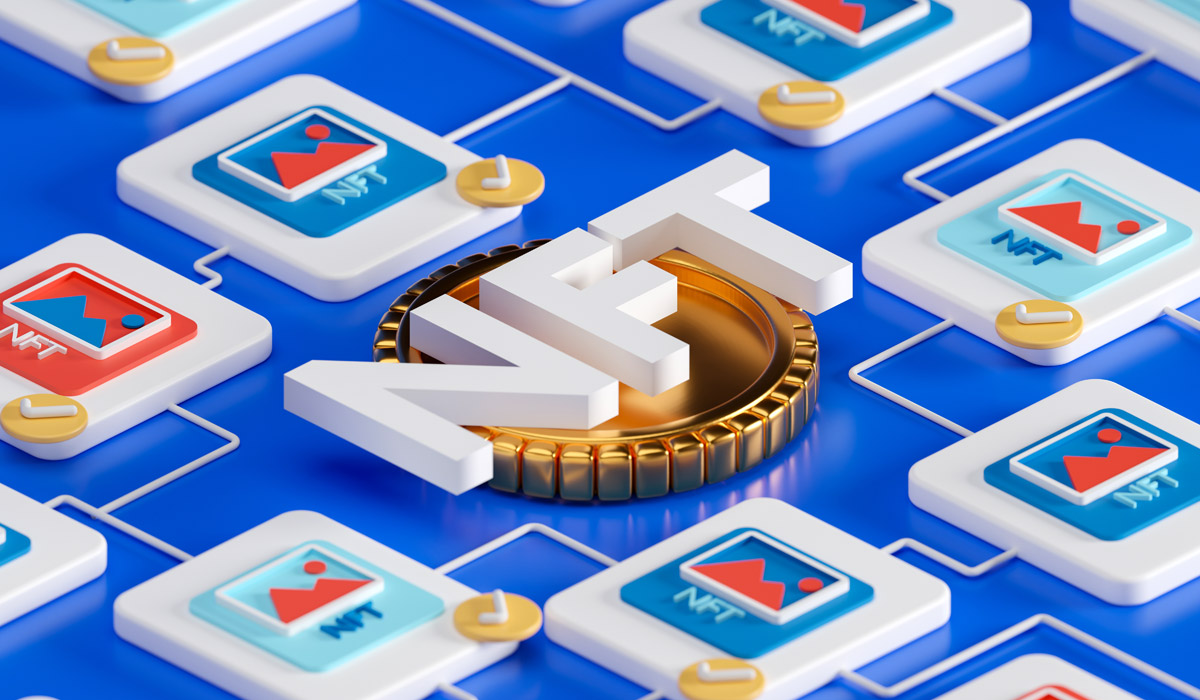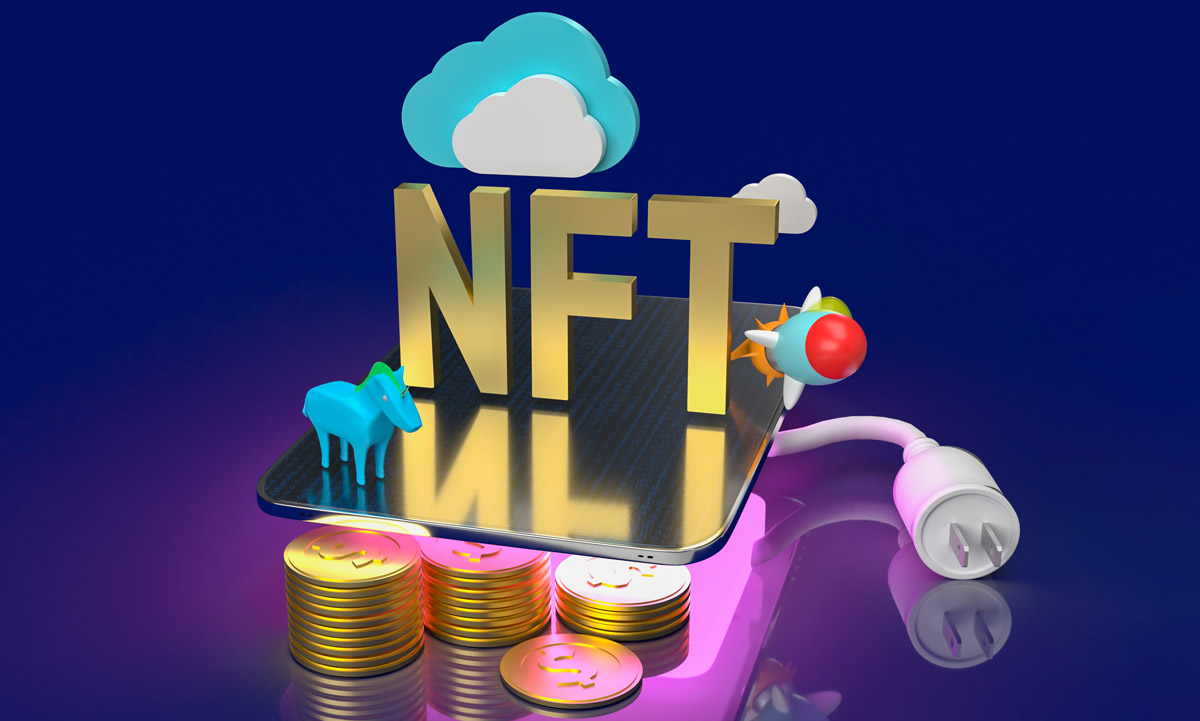In 2021 NFT and the relevant market had become one of the most interesting in the blockchain industry. The market at the beginning was a USD162.4M market which at the end of the year it has hit 12.6B. Despite the costly process, we observe that this market is growing every day, and at the end of each day, lots of NFTs are traded, mainly on the Ethereum Blockchain network.
According to the Raribleanalytics website, issuing an NFT on the Ethereum network is around 98.69 $ and minting a set of NFTs will cost approximately $900.00 to confront costs and profit. In addition, many investors and NFT artists upload their NFTs to secondary markets such as OpenSea. Besides trading NFTs, there are also many ways to earn passive income from NFTs instead of trading them.
Introduction
There are 5 known ways to earn money from NFTs, which are 1- Rent the NFTs, 2- The NFTs Copywrite, 3- Staking the NFTs, 4- Provide liquidity to receive NFTs, and finally, the fifth method is NFTs yield farming.
What is an NFT?
A type of Digital asset is NFT which the owners can trade this type of digital assets. NFT owners can store their valuable NFTs in their wallets (e.g., Trust Wallet and MetaMask) because NFTs are valuable digital assets based on the blockchain networks, with the exact mechanism as cryptocurrencies.
Transfer of an NFT is a costly process like crypto transactions, and the owner and the recipient parties can trade or trade them whenever they wish to. All the network participants store changes on that particular blockchain network. The essential unique information for an NFT is the Contract address and Token ID, which the seller and the owner can verify and validate the transaction with the information.
Five Ways to Earn Passively from NFTs
1) Rent the NFTs
One way to make money with an NFT is to rent the NFT, especially those in high demand. For instance, in some card trading, players can borrow different NFT cards to increase their chance of winning. The terms of card borrowing agreed between the two parties are conducted by smart contracts. As a result, NFT users can freely determine the duration of the contract and its release cost.
The “reNFT” platform is an excellent example of a platform for renting or lending NFTs. Owners can select the most rental periods on this platform and set daily rates. Average daily rates are between 0.002 and 2 Ethereum wrapped Tokens (WETH). The “WETH” (Wrapped Ethereum) token is a version of the ERC-20 Ether (native Ethereum network token).

2) The NFTs Copyright
With this new approach in the digital assets market (NFT), NFT artists (who mint NFTs) can set conditions and receive royalty fees every time their NFTs are traded from further sellers and buyers of the NFT. NFT creators can passively monetize works even once the NFT is sold.
NFT creators can contribute to each NFT sale and benefit from the sale amount in this method. For example, if the royalty fee for digital art is 10%, the NFT owner will receive 10% of the total sale price each time the work is sold to another person. The royalty percentage is often determined in advance of when NFTs are issued. Smart Contracts manage the entire process of applying and receiving royalties. It means that the creator of NFT does not need to do anything special for the royalty revenue and track payments manually. The entire process is done automatically.
3) Staking the NFTs
Another way is to stake or deposit NFTs, which is made possible by combining NFTs with a decentralized financial system or Defi. Staking means depositing or locking up digital assets in a Defi protocol’s Smart Contract for a profit.
Some platforms support various types of NFTs. But to receive the deposit interest on other platforms, one must buy tokens or NFTs from that platform.
Some of the NFTs staking platforms are: Kira Network, NFTX, Splinterlands, Only1
In some cases, interest on the deposited NFT is payable by the state-issued tokens. In this case, token holders can vote on the future development of the platform ecosystem. Tokens from NFT deposits can usually be staked (Re-Invest) again in other protocols.
4) Provide Liquidity to Receive NFTs
With the help of NFT and Defi infrastructures, it is possible to receive NFT in return by providing liquidity to the pools. For instance, when you provide liquidity for the Uniswap V3 pool, the Automated Marketer (AMM) gives you an ERC-721 token (also known as an LP-NFT) that shows the details of your share of the total locked-in capital in the pool. Other information such as deposited currency pairs, tokens signs, and pool addresses come by the NFT, and the new owner can sell this NFT quickly in cash pools and get your cash.
5) NFTs Yield Farming
Because the NFTs are the main part of the automated marketers, users can use NFT products to yield farming. Yield farming is a method in which the user enjoys the benefit of their digital assets in Defi protocols to get the maximum possible deposit interest. According to the previous example, LP-NFT tokens received in exchange for providing liquidity to Uniswap can be staked again in other protocols for additional profit or used as collateral. This method can be defined as “profit from the deposit interest.” This method allows sediment revenue generation for users.
It is important to remember that NFT and its “Smart Contract” technology are still new. Most of the projects and programs listed in the methods above are in their infancy. As a result, before making any decisions and using passive monetization methods from NFT, you need to do good research and be aware of the risks and dangers of each.
Conclusion
The NFTs are so popular in the market these days, and selling them is not the only way to monetize them. People can also make a profit in several ways. This article has tried to unveil five ways to earn money passively from NFTs. We will appreciate it if an interested person who comments on these methods lets us know. Also, please share with us their constructive favorite ways to earn money.
